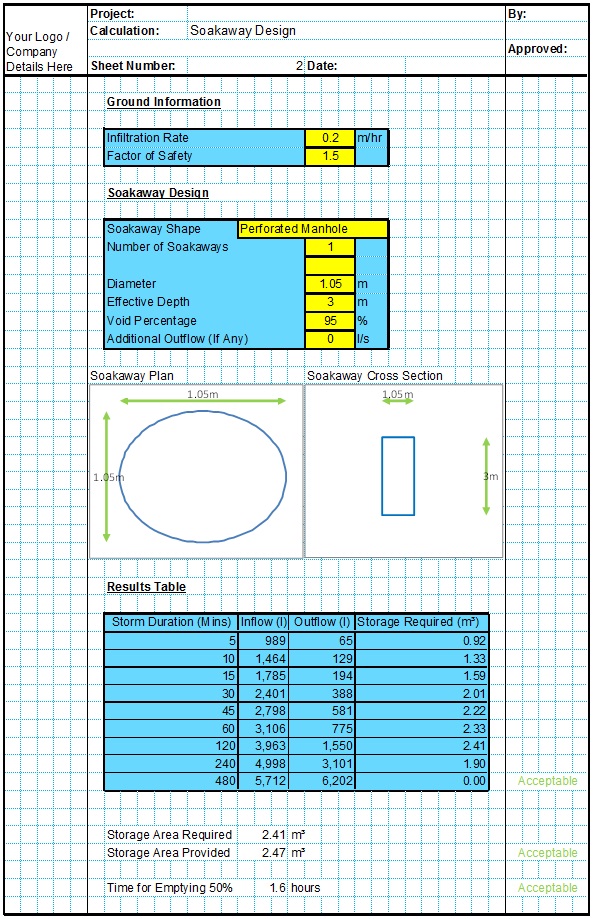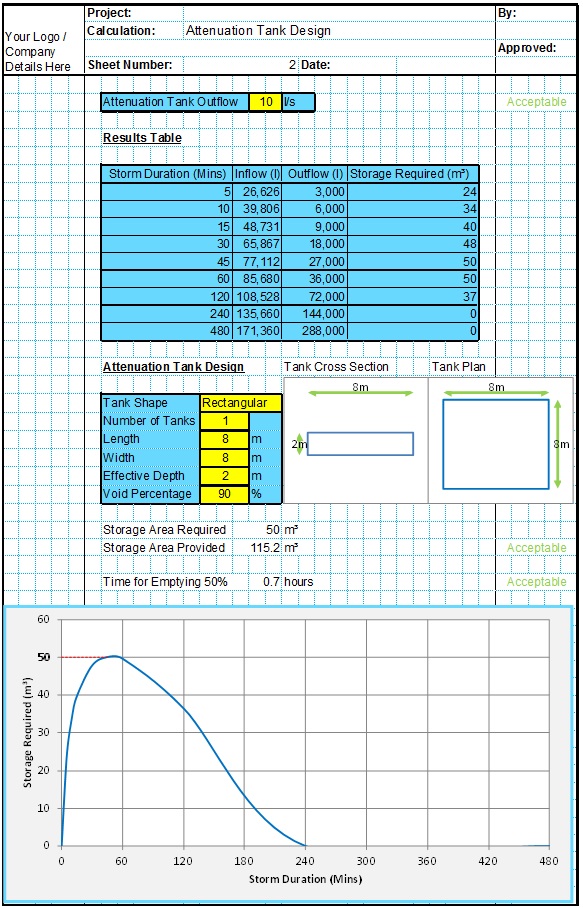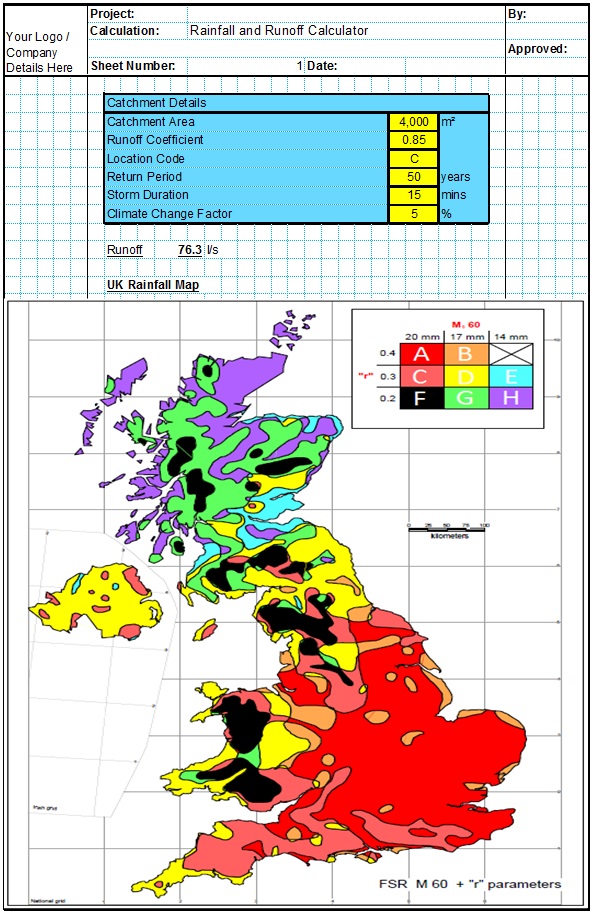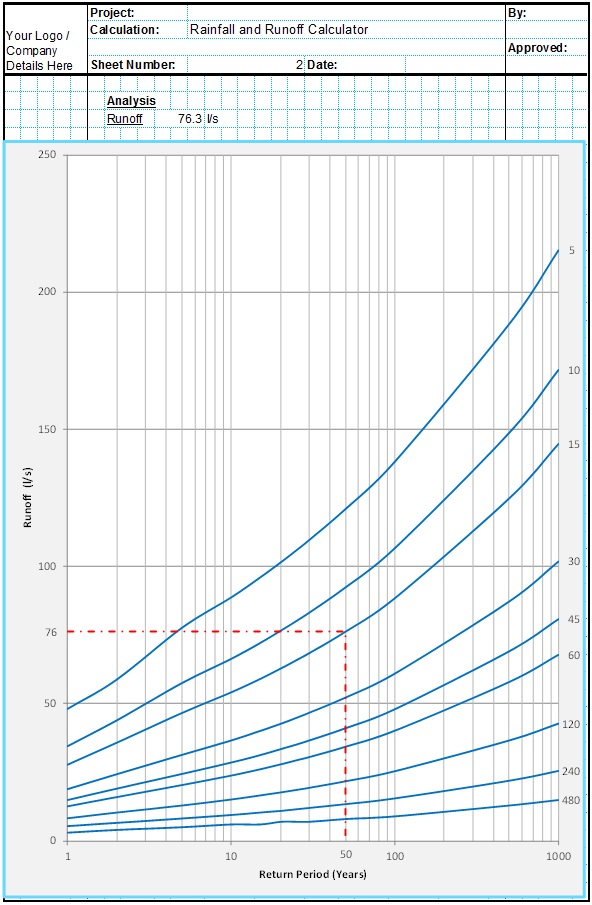The Base Infiltration Factor determines how much infiltration the calculation is allowed to include through the base of the soakaway.
Base Infiltration Factor - Concrete Bases
For soakaways including a solid concrete base, this factor will be 0 as no infiltration will occur through a solid concrete base. Where precast concrete soakaway units are used a solid concrete base is recommended for the following reasons;
- It provides a solid level surface for the precast concrete units to be installed upon
- It prevents underlying soils from being washed out by infiltrating water which could destabilise the precast units
- It is easier to remove sediments from a solid concrete base during maintenance and prevents the risk of units being accidentally undermined during sediment removal
- It is easier to construct a solid concrete base rather than a ring foundation or base with an opening
Base Infiltration Factor - Open Bases
For infiltration trenches or filled soakaways the base is open for infiltration. However the base often becomes blocked with sediments, reducing the infiltration rate. The choice of the base infiltration factor is influenced in some of the same ways as the choice of infiltration factor of safety. The main factors are included below;
- The expected level of maintenance. Where this can be actively controlled by the client the base infiltration factor could be increased to allow for the lower levels of sedimentation and reduced likelihood of the infiltration rate deteriorating over time. One example of this might be where a rigorous maintenance procedure is already in place for other soakaways on the same site.
- The likelihood of the base infiltration rate deteriorating over time can be dependent on runoff conditions and on the level of sediment interception methods employed. Where the runoff is expected to be low in sediment, for example roof runoffs, the base infiltration factor could be increased. Also suitable sediment interception methods such as filter strips and catchpits can reduce the likelihood of the base infiltration rate deteriorating over time, possibly justifying a higher base infiltration factor.
- Similarly silty or clay soils with a low infiltration rate are less likely to be impacted by accumulated sediments which could justify a higher base infiltration factor. Accumulated sediments will have a similar infiltration rate to silty soils, around 1x10^-6 m/s, so any design infiltration rates similar to this value will not be significantly impacted by sediments accumulated within the soakaway.
- The expected time to empty can also be a factor. When the soakaway is designed to empty slowly this can lead to the soakaway retaining some level of water for long periods during prolonged periods of rainfall. This can lead to microbial growth at the base of the soakaway which reduces the infiltration rate through the base.
BRE Digest 365 Method
It should also be noted that the BRE 365 design method does not include for any infiltration through the base, assuming that it will be either concrete of become blocked with sediments. Therefore to complete a design in accordance with BRE 365, the base infiltration factor in the CivilWeb Soakaway Design spreadsheet should be set at 0.
Related Spreadsheets from CivilWeb;
Soakaway Design Spreadsheet
This spreadsheet calculates the requirements for a soakaway system and assists the user to design a suitable system.
Attenuation Design Spreadsheet
This spreadsheet calculates the requirements for a attenuation system and assists the user to design a suitable system.
Runoff Calculator Spreadsheet
This spreadsheet calculates the design runoff flow for a site in accordance with the a number of different methods including the Wallingford Procedure.
Full Drainage Design Suite
Full drainage design suite (50% Discount) including 7 spreadsheets;
- Colebrook White Pipe Design
- Manning Pipe Design
- Manning Open Channel Design
- Linear Drainage Design
- Runoff Calculator
- Attenuation Design
- Soakaway Design



